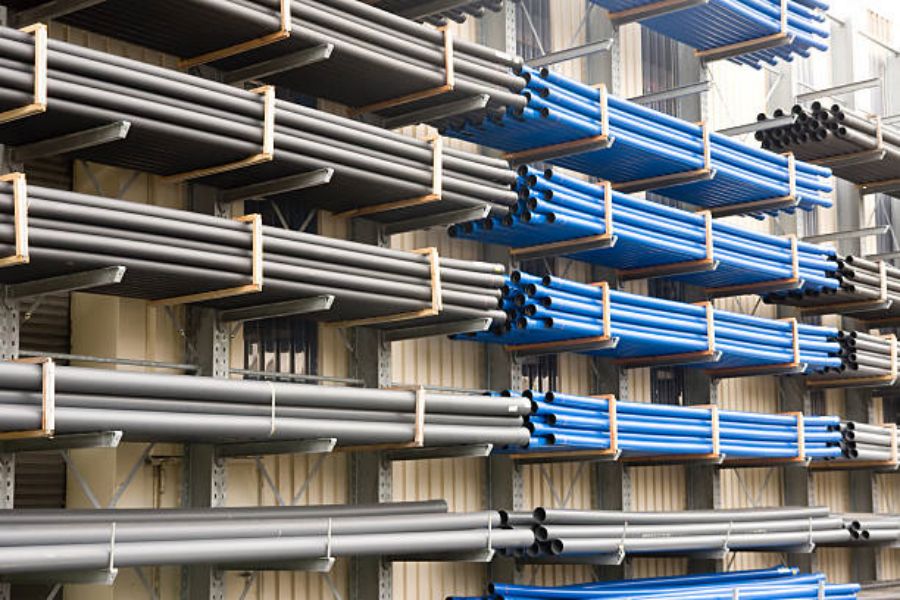1. The Importance of Large Plastic Drain Pipes in Plumbing Systems
Large plastic drain pipes play a crucial role in the efficient functioning of plumbing systems. These pipes are designed to transport wastewater and other liquid waste away from your property, ensuring proper drainage and preventing potential plumbing issues.
2. Advantages of Using Large Plastic Drain Pipes
There are several advantages to using large plastic drain pipes in your plumbing system:
- Durability: Large plastic drain pipes are made from high-quality materials that are resistant to corrosion and rust. This durability ensures that your drain pipes will last for many years without the need for frequent replacements.
- Cost-Effective: Plastic drain pipes are relatively inexpensive compared to other materials such as metal or concrete. This affordability makes them a popular choice for both residential and commercial plumbing projects.
- Easy Installation: Large plastic drain pipes are lightweight and easy to handle, making the installation process quick and hassle-free. Their flexibility also allows for easy maneuvering around obstacles, reducing the need for extensive excavation.
- Low Maintenance: Plastic drain pipes require minimal maintenance. Unlike metal pipes, they are not prone to rust or corrosion, eliminating the need for frequent repairs. Regular inspections and cleaning are usually sufficient to keep your drain pipes in optimal condition.
3. Types of Large Plastic Drain Pipes
There are several types of large plastic drain pipes available, each with its own specific characteristics and applications:
- PVC Drain Pipes: Polyvinyl chloride (PVC) drain pipes are the most commonly used type of plastic drain pipes. They are lightweight, durable, and resistant to chemicals, making them suitable for a wide range of plumbing applications.
- ABS Drain Pipes: Acrylonitrile butadiene styrene (ABS) drain pipes are known for their high-temperature resistance and impact strength. They are commonly used in residential plumbing systems.
- HDPE Drain Pipes: High-density polyethylene (HDPE) drain pipes are highly durable and resistant to chemicals, making them ideal for industrial and commercial applications.
4. Proper Installation of Large Plastic Drain Pipes
Proper installation is crucial to ensure the optimal performance of large plastic drain pipes. Here are some key steps to follow:
- Plan the drainage system: Determine the ideal route for the drain pipes, considering factors such as slope, distance, and potential obstacles.
- Prepare the trench: Excavate a trench according to the required depth and width, ensuring a stable foundation for the drain pipes.
- Install the fittings: Connect the necessary fittings, such as bends, couplings, and connectors, to ensure a secure and leak-free system.
- Place the drain pipes: Carefully place the large plastic drain pipes into the trench, ensuring proper alignment and slope for efficient drainage.
- Secure the pipes: Use appropriate brackets or supports to secure the drain pipes in place, preventing movement or potential damage.
- Test the system: Conduct a thorough test of the drainage system, checking for any leaks or blockages. Make necessary adjustments or repairs as needed.
- Backfill the trench: Once the system is functioning properly, backfill the trench with the appropriate material, ensuring proper compaction.
5. Common Issues with Large Plastic Drain Pipes
While large plastic drain pipes are generally reliable, there are some common issues that may arise:
- Clogs: Over time, debris and sediment can accumulate inside the drain pipes, leading to clogs and reduced drainage efficiency. Regular cleaning and maintenance can help prevent clogs.
- Cracks or Leaks: Extreme temperature changes or physical damage can cause cracks or leaks in the drain pipes. Prompt repairs are necessary to avoid further damage to the plumbing system.
- Root Intrusion: Tree roots can infiltrate drain pipes through small cracks or joints, causing blockages and potential damage. Regular inspections can help detect root intrusion early.
6. Proper Maintenance of Large Plastic Drain Pipes
To ensure the longevity and efficiency of your large plastic drain pipes, regular maintenance is essential. Here are some maintenance tips:
- Regular Inspections: Schedule periodic inspections of your drain pipes to check for any signs of damage, leaks, or blockages. Early detection can prevent costly repairs.
- Cleaning: Use non-corrosive cleaning agents to remove any buildup or debris from the drain pipes. Avoid using harsh chemicals that may damage the plastic material.
- Preventative Measures: Install drain strainers or guards to prevent large particles or hair from entering the drain pipes. This can help reduce the likelihood of clogs.
7. Environmental Impact of Large Plastic Drain Pipes
Large plastic drain pipes have a relatively low environmental impact compared to other materials. They are recyclable and can be repurposed into new plastic products. Additionally, their lightweight nature reduces transportation emissions during the manufacturing and installation processes.
8. Applications of Large Plastic Drain Pipes
Large plastic drain pipes have a wide range of applications, including:
- Residential plumbing systems
- Commercial buildings
- Industrial facilities
- Municipal drainage systems
- Agricultural irrigation
9. Choosing the Right Large Plastic Drain Pipes
When selecting large plastic drain pipes for your plumbing project, consider the following factors:
- Size: Ensure that the diameter and length of the drain pipes are suitable for your specific needs.
- Material: Choose a material that is appropriate for the intended application, considering factors such as chemical resistance and temperature tolerance.
- Standards and Certifications: Look for drain pipes that comply with industry standards and certifications to ensure their quality and performance.
10. Conclusion
Large plastic drain pipes are an essential component of plumbing systems, providing efficient wastewater disposal and preventing potential plumbing issues. Their durability, affordability, and ease of installation make them a popular choice for various residential, commercial, and industrial applications. By following proper installation and maintenance practices, you can ensure the optimal performance and longevity of your large plastic drain pipes.

